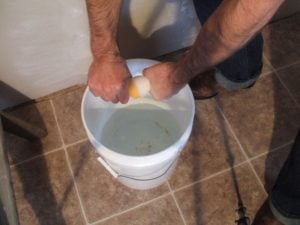[AdSense-A]One of the biggest questions that always seems to come up when sanding drywall is wet versus dry. Both have their advantages and disadvantages, are easy to do, and have their time and place during any remodel. Asking the pros will yield a varying degree of answers, and depending on what you’re trying to achieve and the extent of the sanding job, the answer lies in the following.
Straight from the pros, the following gives you the advantages and disadvantages to wet sanding drywall over dry sanding.
Advantages toWet Sanding Drywall Over Dry Sanding
Below are the most common advantages that may change your mind if considering dry sanding drywall over wet sanding:
- Produces less or eliminates the amount of drywall dust all-together
- Resources are minimal consisting of a sponge, bucket, and water which can typically be found lying around the house
- Great for small projects
Get Tips on How to Reduce Drywall Dust
Disadvantages to Wet Sanding Drywall Over Dry Sanding
Below are the most common disadvantages that may change your mind if considering wet sanding drywall over dry sanding:
- More time consuming
- Difficult if having to sand a lot or thick amounts of drywall mud
- More of a manual instead of a mechanical process
- Wet sanding drywall cannot be used if tape is used
- Instances of inadvertently removing too much drywall compound
- Not recommended for large projects
Probably the single biggest reason why someone would choose wet sanding over dry sanding is to eliminate, or decrease the amount of dust. Sanding drywall creates a whole lot of dust which becomes much more than a nuisance as it can become a safety concern as well. Dry sanding is a lot less labor intensive, is less time consuming, and more times than not, creates more of a professional look. The smoother finish is better achieved through the mechanical process of the sander than the physical process of the sponge.
Ultimately, the decision is up to you as both have distinct advantages and disadvantages. For smaller jobs, wet sanding may be the best option, but for larger jobs dry sanding is definitely recommended.
Feel free to tell us what you think including your own experiences in the comments below.
[AdSense-A]





